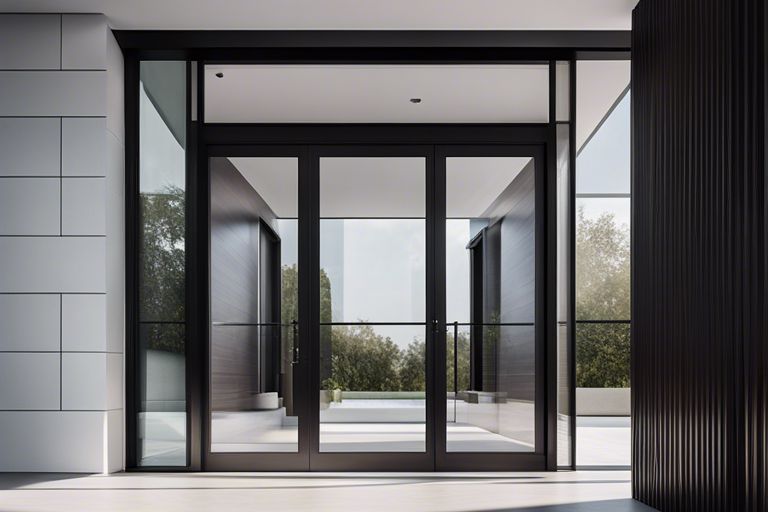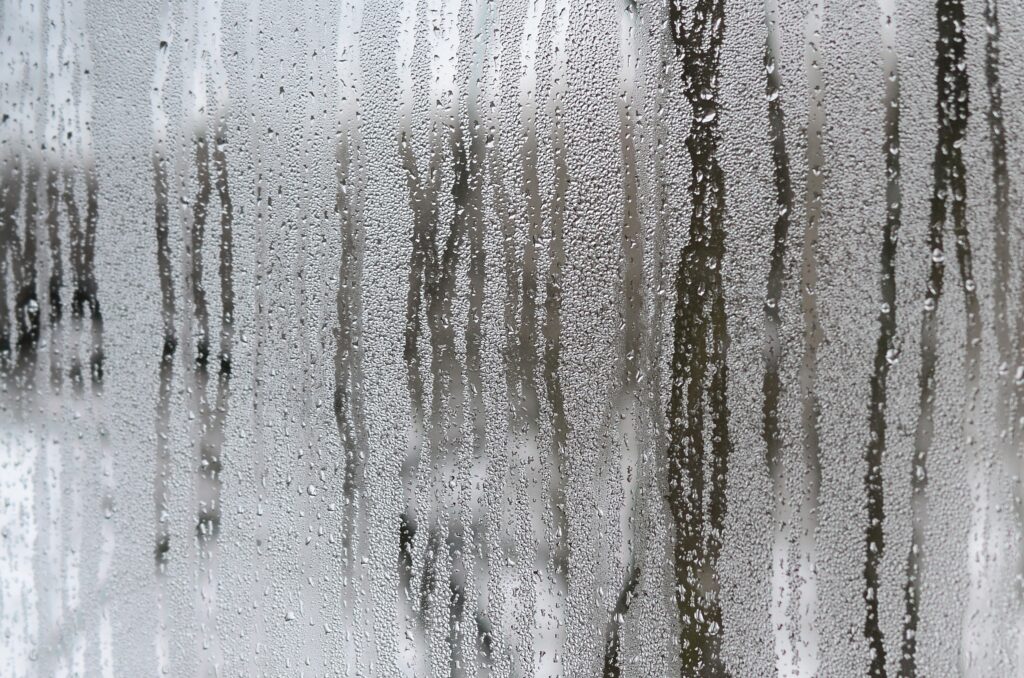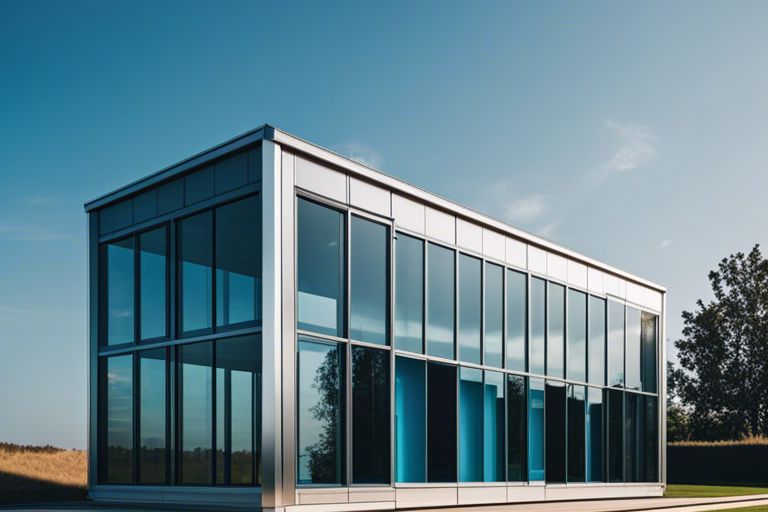In the world of architecture, curtain wall technology plays a crucial role in modern building design. A curtain wall is a non-structural outer covering of a building that is designed to keep out the elements and withstand wind loads. Made of lightweight materials such as glass, aluminium, and steel, it is installed to create a striking visual impact while providing functionality and efficiency. These walls are often used on tall buildings and skyscrapers, offering natural light and energy efficiency. However, improper installation or maintenance can lead to water leakage and safety hazards. Understanding how curtain wall technology works is essential for architects, engineers, and builders to ensure the durability and sustainability of modern buildings.
Key Takeaways:
- Curtain wall technology is a non-structural cladding system that is used to envelope buildings.
- It works by bearing its own weight and wind load, transferring these to the main structure through anchors and support mullions.
- Key benefits of curtain wall technology include improved aesthetics, natural lighting, and energy efficiency in buildings.
Types of Curtain Walls
Curtain walls come in various types, each serving different purposes and offering unique benefits. Understanding the different types is crucial to choosing the right curtain wall for a specific project.
- Stick Systems
- Unitized Systems
- Truss-supported glass walls
- Structural glass walls
- Point-supported glass walls
| Stick Systems | Unitized Systems |
| Truss-supported glass walls | Truss-supported glass walls |
| Structural glass walls | Structural glass walls |
| Point-supported glass walls | Point-supported glass walls |
Stick Systems
Stick systems involve assembling the curtain wall on-site by piecing together the frame one component at a time. This traditional method offers flexibility in design and is suitable for projects with complex geometries. However, it requires meticulous installation and is prone to leaks if not sealed properly.
Unitized Systems
Unitized systems are fabricated off-site in modules and then installed on the building structure as prefabricated units. This method reduces installation time significantly and ensures consistency in quality. Unitized systems are more expensive upfront but can save time and costs during installation on-site.
Unitized systems are becoming increasingly popular in the construction industry due to their efficiency and quality control in a controlled factory environment.

Components and Materials
When it comes to curtain wall technology, understanding the components and materials used is crucial. This modern architectural feature typically consists of aluminium frames, glass panels, and structural elements that work together to provide buildings with aesthetic appeal and functionality.
Structural Elements
One of the key structural elements in curtain wall systems is the mullions and transoms. Mullions are vertical members that support the dead load of the curtain wall, while transoms are horizontal members that help distribute wind loads. By optimising the design of these components, architects and engineers can create curtain walls that are both durable and visually striking.
Additionally, curtain walls incorporate spandrel panels to conceal the edges of floor slabs and create a seamless appearance. These panels are often made of materials such as metal, stone, or glass fibre reinforced concrete, providing designers with flexibility in achieving the desired aesthetic for the building facade.
Glass and Glazing Options
When it comes to glass and glazing options for curtain walls, there are several choices available to architects and developers. From clear and tinted glass to low-e coatings and double-glazed units, each option offers specific benefits in terms of energy efficiency and thermal performance.
By selecting the right glass and glazing options, building owners can enhance natural daylighting within the interior space, reduce reliance on artificial lighting, and improve overall energy savings. Choosing high-quality materials and expertly engineered glass solutions is essential in achieving a curtain wall system that not only looks impressive but also performs efficiently.

Design and Installation Process
In the world of architecture and construction, curtain wall technology plays a crucial role in modern building design. The design and installation process of curtain walls require meticulous planning, precision engineering, and skilled craftsmanship to bring a vision to life.
Conceptualization and Planning
During the conceptualization and planning phase, architects and engineers work closely to envision the aesthetic and functional needs of the building. Factors such as building orientation, climate considerations, energy efficiency, and structural requirements all play a significant role in determining the design of the curtain wall.
Furthermore, detailed analysis and calculations are conducted to ensure the curtain wall can withstand various forces such as wind loads, seismic activity, and thermal expansion. The conceptualization and planning phase is crucial as it sets the foundation for the successful implementation of the curtain wall system.
Fabrication and Assembly
Once the design is finalised, the fabrication and assembly of the curtain wall components begin. Aluminium frames, glass panels, insulation materials, and other components are precision-manufactured off-site to ensure quality and accuracy in the final product.
The fabrication and assembly process involves assembling the various components into complete curtain wall units that are then transported to the construction site for installation. This off-site fabrication allows for better quality control and faster installation on site, minimising disruptions and ensuring the project stays on schedule.

Performance and Sustainability
When it comes to curtain wall technology, one of the key aspects to consider is its performance and sustainability. These modern architectural systems are designed not only to enhance the aesthetics of a building but also to improve its overall efficiency and environmental impact.
Energy Efficiency
Curtain walls are built with energy efficiency in mind, incorporating features such as thermal breaks and low-emissivity glass to help reduce heat loss and gain. By utilising natural light more effectively, buildings with curtain walls can decrease their reliance on artificial lighting and heating systems, thus lowering energy consumption and reducing carbon footprint.
Additionally, cutting-edge technologies like smart glass can be integrated into curtain wall systems to adjust light and heat transmission based on external conditions, further improving energy efficiency and creating a more sustainable environment.
Maintenance and Durability
When it comes to the long-term performance of a building, maintenance and durability are crucial factors to consider in curtain wall technology. These systems are designed to be durable and weather-resistant, requiring minimal maintenance over their lifespan. Regular inspections and cleaning can help extend the longevity of curtain walls, ensuring they continue to perform at their best for years to come.
Furthermore, advancements in materials and construction techniques have made modern curtain walls more resistant to corrosion and environmental factors, enhancing their durability and reducing the need for frequent repairs. This results in cost savings for building owners and a decreased impact on the environment.
It is essential to note that while maintenance and durability are key benefits of curtain wall technology, regular upkeep and inspections are still necessary to ensure optimal performance and sustainability of the system in the long run. Investing in high-quality materials and professional installation can further enhance the longevity of curtain walls.
How Does Curtain Wall Technology Work?
Curtain wall technology functions as an external covering for a building’s facade, designed to protect against weather and provide insulation. These non-structural walls are typically made of lightweight materials such as glass, metal, or stone, and are connected to the building’s framework. The technology works by creating a barrier between the interior and exterior environment, enhancing energy efficiency and allowing natural light into the building. Through a combination of design, materials, and construction, curtain walls help buildings achieve modern aesthetics while improving functionality and sustainability.
In short, curtain wall technology plays a crucial role in enhancing the performance and appearance of modern buildings. Its innovative design and materials contribute to energy efficiency, natural light ingress, and protection from the elements, making it a popular choice in contemporary architecture and construction.
FAQ
Q: What is Curtain Wall Technology?
A: Curtain wall technology is a non-structural cladding system used to create a protective barrier around a building’s exterior. It typically consists of aluminium frames that support glass, metal panels or stone, providing an aesthetically pleasing appearance while protecting the building from weather elements.
Q: How does Curtain Wall Technology work?
A: Curtain wall systems are installed on the exterior of buildings to provide an extra layer of protection. The technology works by transferring the dead load and wind loads of the building to the main structure through anchor points. The system also allows for natural light to enter the building, enhancing the indoor environment.
Q: What are the benefits of using Curtain Wall Technology?
A: Curtain wall technology offers several advantages, including improved thermal performance, enhanced natural lighting, reduced energy costs, and increased design flexibility. Additionally, these systems require minimal maintenance and can be customised to meet specific architectural requirements, making them a popular choice for modern building facades.






